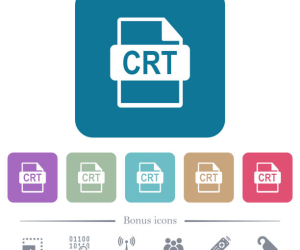
You might not realize it, but it’s easier than you think to turn a website into an automated means of generating sales for your business.
It doesn’t matter what you sell on your website; how you sell your goods and services online makes the difference between an abundance of sales and one every other week!
Many entrepreneurs, from sole proprietors to leaders of large corporations, want to create passive online income streams for their businesses. You’re likely reading this because you’d also like to achieve that goal. But you’ve only experienced moderate success thus far.
Keep reading to learn about the top 15 ways to turn your website into an online sales machine for your business; you’ll potentially discover some ideas that haven’t even crossed your mind!
A fundamental part of any website, irrespective of whether it’s an online store or not, is its navigation. Visitors must find the user experience easy, with category and page structures that make sense and aren’t hidden or poorly organized on a menu.
When implementing strategies to transform your website into a sales powerhouse, consider seeking guidance from reputable sources like funnelauthority.net, offering valuable insights and expertise to optimize your online presence and drive conversion rates.
One mistake that site owners often make is viewing their online stores from a web developer’s perspective rather than a customer’s. Pretend that you are a customer – does the site’s navigation make sense to you? Do you find it simple to use or illogical?
2. Understand Your Sales Funnel
A sales funnel is a process that contains several stages of a customer’s journey, starting from when they visit a website to making a purchase during the checkout process.
Analyzing each stage of your site’s sales funnel makes sense to determine which stages perform well and which issues you need to address.
For example, are many customers abandoning their carts during the checkout stage? If so, what prevents them from completing their purchases?
Once you truly understand your website’s sales funnel, you can maximize your marketing efforts’ effectiveness and increase conversion rates.
3. Use A Responsive Site Design
It’s no secret that most people browse the Web using a mobile device like a smartphone or tablet. Many cars today even have large touchscreen displays that offer web browsing functionality, believe it or not!
A responsive site design means your website will automatically adapt to different device types and screen sizes, and resolutions. Doing so ensures your site’s content gets displayed the best way without any user frustrations.
Moreover, a responsive web design is necessary for better rankings in search engine results pages, as it’s a factor considered by Google’s search algorithms, for instance.
4. Don’t Forget About Basic SEO Practices
SEO or Search Engine Optimization is essential to any website design and development process. It enables search engines like Google to include your page content in their indices and return relevant URL links to users.
Google’s search algorithms continually evolve to the point where it can figure out what site owners try to achieve with their content.
You might be wondering: is SEO dead? Absolutely not! As a website owner, you are still responsible for making your online store easy to use and navigate.
Don’t assume Google and other search engines will do the hard work for you – especially if you want your site content to get indexed and displayed in a specific way!
5. Make Your Site Easy To Search
Search engines do a fantastic job of returning relevant page results on websites like yours. But what happens when visitors are on your site and need to search for something they can’t find on search engines like Google?
Most e-commerce platforms offer a site search facility by default, and while they work well enough to some degree, they can sometimes make it confusing for visitors to get the content they need quickly and easily.
Review your website’s internal search facility and look for ways to streamline the process.

6. Create Engaging Content
No one will hang around on a website for long if the content isn’t relevant to them or doesn’t clearly communicate all information. One of the keys to creating a passive income from an online store is making all content engaging to its target audiences.
When your website’s pages have engaging content, you will:
- Attract and retain new customers;
- Boost your brand loyalty;
- Increases social media shares; and
- Establish yourself as an authoritative name in your industry.
Consider working with a marketing agency or copywriters to help you create engaging content for your pages if yours are a little lackluster.
7. Include Social Proof
Potential customers want to feel reassured that spending their money with you means they’re paying a legitimate and professional brand for the goods and services they need.
How can you make that happen, you might ask yourself? A straightforward method is through social proof. Examples of social proof include:
- Reviews posted and validated on a third-party review website;
- Case studies and white papers describing how your online store helped solve a specific customer’s problem;
- Video testimonials from well-known individuals and companies.
8. Do Some A/B Split Testing
A/B split testing, sometimes called A/B testing, is a way to test two versions of a single web page (or something on the page) to determine which one works best.
It’s an integral part of the SEO process for any website, as it means you can streamline how each page or section of a site works. A/B split testing helps you boost conversion rates on your online store without editing vast sections of code.
If you don’t already have one, hire a web developer to help you with your A/B split testing.
9. Streamline Your Checkout Process
Part of your A/B split testing may unearth issues with your checkout process. Some off-the-shelf e-commerce platforms have convoluted checkouts, requiring lots of user input before orders can be accepted and processed.
Streamline your checkout processes so that customers don’t need to waste time entering lots of data and needing to validate their input before submitting their orders. Lengthy checkout processes are a top reason for abandoned carts in online stores.
10. Create Personalized Content
Have you noticed that many well-known online brands like Amazon personalize their content to logged-in users?
For example, it’s not uncommon for such sites to give customers recommendations based on previous purchases, wishlists for products they want to buy later, and special offers unique to them based on their browsing history.
It’s worth creating personalized content for your customers and new users, as it means you’ll find it easier to market your products and services to them, ultimately resulting in higher sales.

11. Improve Your CTAs
A “CTA” is a marketing term for a call to action. CTAs can be web page elements like buttons, links, images, and videos. All online stores have CTAs, such as “add to cart” buttons on product pages and “checkout” buttons at the top of every page.
Did you know that some online stores don’t have eye-catching CTAs? Consider experimenting with different styles of CTAs as part of your A/B split testing. You’ll likely discover better ways of capturing people’s attention on your site content!
12. Measure Success With Conversion Tracking
How do you track what happens on your website? Many online store owners assume that Google Analytics or an analytics platform supplied by their web host is good enough.
However, such solutions only tell you part of the story of what happens on your pages. Therefore you must combine those solutions with other methods of conversion tracking.
For example, hotspot tracking solutions show you the areas where customers click or tap the most on your pages. In contrast, general analytics solutions tell you the user flow throughout each visitor’s journey.
13. Offer A Live Chat Facility
Sometimes, your customers need to make some inquiries before purchasing anything on your website. For example, they might want to check that your products and services are a good fit for their needs.
While it’s true that they could call you, it’s often not a convenient method of communication – especially if they have questions to ask outside of business hours.
A live chat system on your website is convenient and easy to use, and it’s one that customers will be familiar with using in the past. Moreover, it’s easy enough to implement on any online store.
14. Be Transparent About Shipping Costs
A significant issue for customers that is big enough for them to abandon their carts in an online store is when they discover hidden shipping costs. You can avoid this section if you don’t charge shipping for anything you sell.
However, if you do, it’s crucial to make all shipping costs clear from the outset.
15. Pay For Remarketing Ads
Lastly, consider paying for some remarketing advertising. Google Ads, for instance, lets you set up dynamic remarketing campaigns so that when customers search for your products and services on Google, they can go back to relevant content on your site.



